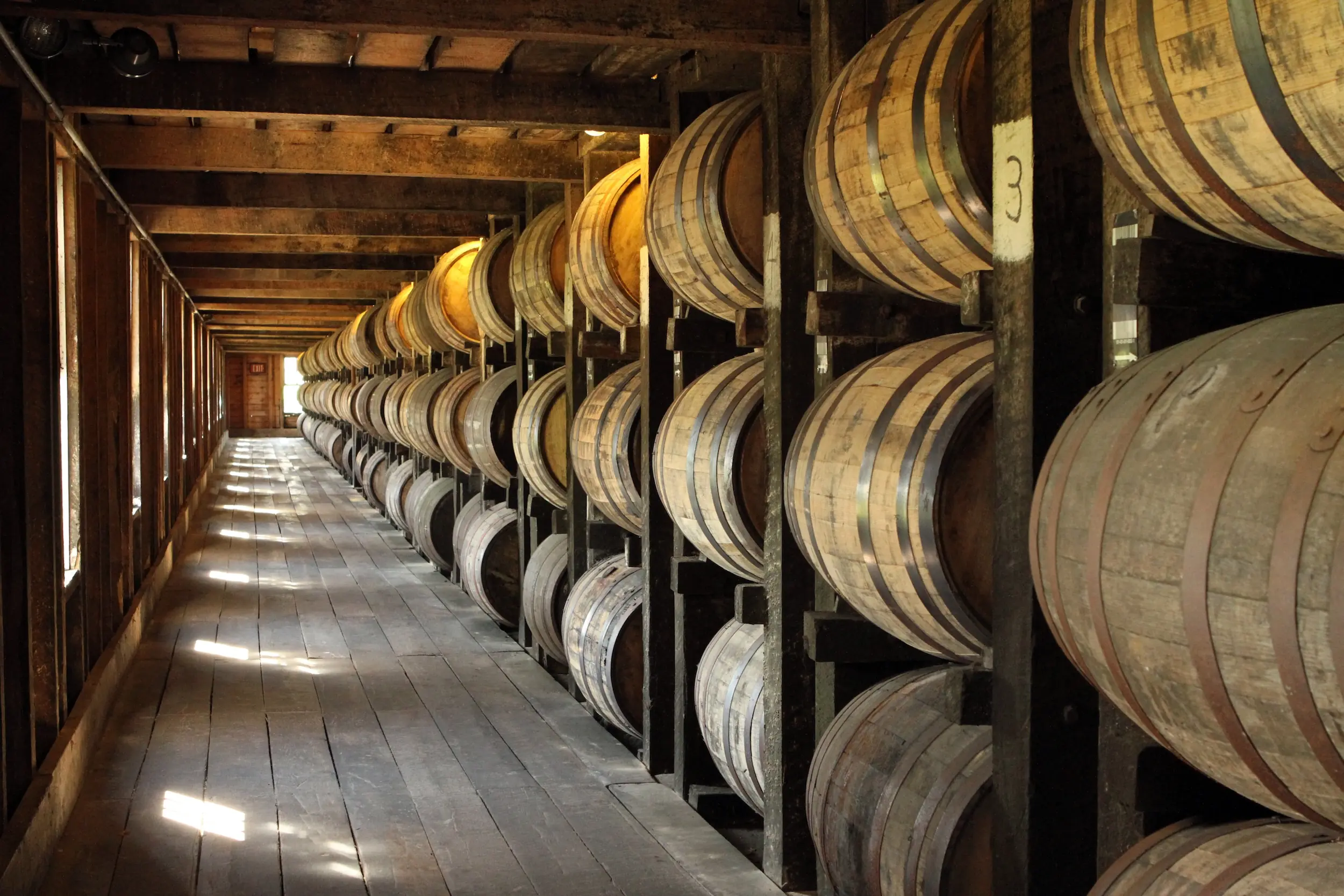The Secret Life of the Rickhouse

When you enjoy a glass of your favorite whiskey, you probably think about the mash bill, the distillation process, and maybe the age statement. But there’s a fascinating, often overlooked player in the whiskey aging game: the rickhouse and its hidden microclimates.
It’s easy to assume that every barrel in a massive aging warehouse experiences the same conditions, but that couldn’t be further from the truth. In fact, the physical location of a barrel within a rickhouse, whether it’s tucked away on the ground floor or baking near the roof, creates a unique “microclimate” that drastically impacts the final flavor of the spirit.
Let’s look into why those big, barn like structures are more dynamic than they look, and how these subtle environmental differences shape the whiskey you love.
A traditional rickhouse, particularly the tall, open air structures common in Kentucky, isn’t just a storage facility; it’s a living, breathing environment. Unlike climate controlled warehouses, these buildings are designed to interact with the seasons, exposing the barrels to the natural swings of temperature and humidity. This exposure creates distinct zones within the warehouse. Think of it as a multi-story apartment building, but for bourbon barrels.
The most significant microclimate variation occurs vertically. Go back to your junior high science class. Heat rises, so the upper floors of a rickhouse are considerably warmer than the lower ones. This is sometimes referred to as the “chimney effect.”
Barrels aged on the top floors, often called the “hot spots”, experience intense temperature fluctuations. This heat accelerates the aging process. The whiskey expands into the wood staves, extracting more of the oak’s flavor compounds, sugars, and tannins. This often results in a whiskey with a darker color, bolder flavor, and higher proof. In short, if a barrel is high up, it’s working overtime. Conversely, the ground floors of the rickhouse are cooler and generally more humid. Whiskey aged on these lower ricks matures at a slower, gentler pace. The flavors extracted from the wood are more subtle, and the whiskey tends to maintain a smoother, less oak-forward profile. Interestingly, in highly humid conditions, the whiskey on the lower floors might even lose alcohol proof over time as water evaporates more slowly than alcohol.
The magic of whiskey aging isn’t just about static temperature; it’s about the constant change, known as thermal cycling. As temperatures rise during the day (or summer) and fall at night (or winter), the wood of the barrel expands and contracts. This movement acts like a pump, pushing the whiskey deep into the charred oak and then drawing it back out. This constant interaction is what develops the complex flavors and rich color of the spirit.
Microclimates amplify this process. The barrels near the roof experience a more dramatic thermal cycle, leading to a quicker extraction of flavors, while those on the lower floors undergo a slower, more nuanced extraction.
For distillers, these microclimates are a huge advantage. They don’t just yield inconsistent results; they provide a rich palette of flavors.
Imagine a master blender sampling barrels from different floors of the same rickhouse. The whiskey from the top might offer intense vanilla and spice notes, while the whiskey from the bottom provides a delicate balance and softer texture. By carefully selecting and blending these different profiles, distillers can achieve the signature taste of their brand.
Some distilleries even rotate their barrels from the top floors to the bottom to ensure more consistent aging, but many embrace the variation, recognizing that the microclimates are what give their whiskey character and complexity.
So, take a moment to appreciate the humble rickhouse. It’s more than just a warehouse; it’s a testament to the fact that even within the same building, every barrel is on its own unique journey. The microclimates of the rickhouse are a subtle, yet essential, part of the whiskey story, reminding us that sometimes the best things in life are shaped by the elements.

Leave a Reply
Become an insider and receive weekly advice, tips, and insight on all things whiskey
.
Weekly tips, reviews and recommendations to help you enjoy whiskey life to the fullest.
JOIN THE LIST
Sippin' With Jordan Davis
sippin' with the stars
Million Dollar Cowboy Bar WY
old fashioned aF
5 Steps To Sip and Savor Whiskey
whiskey 101
COMMENTS